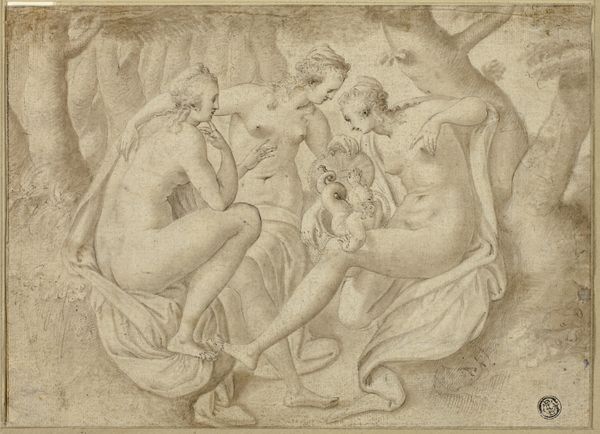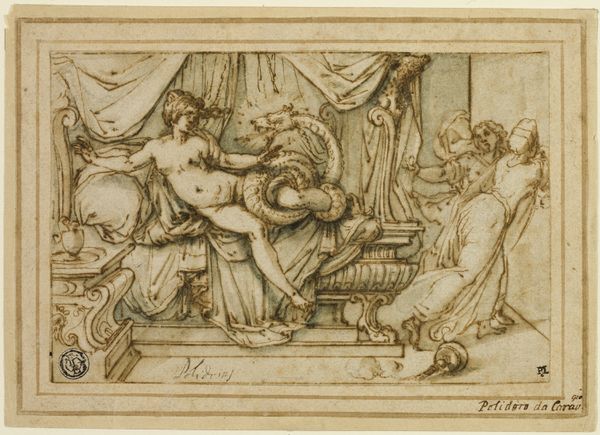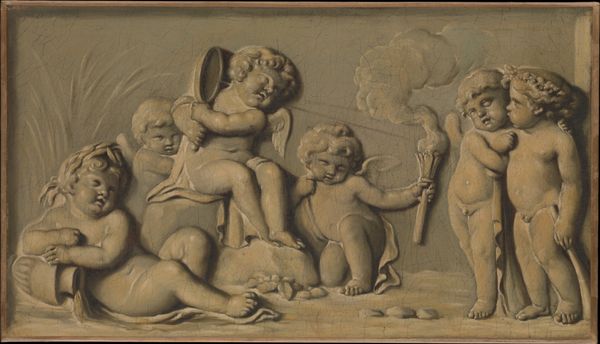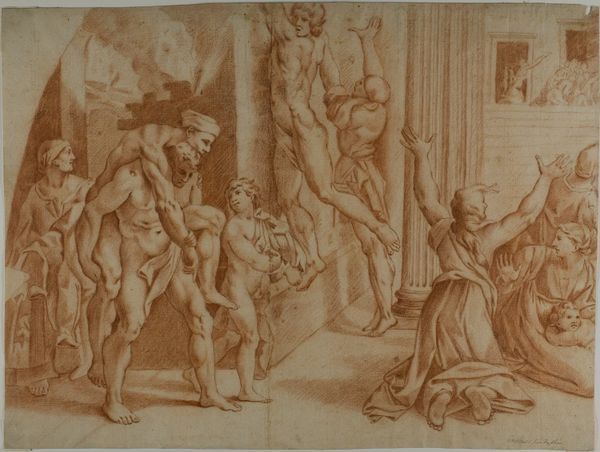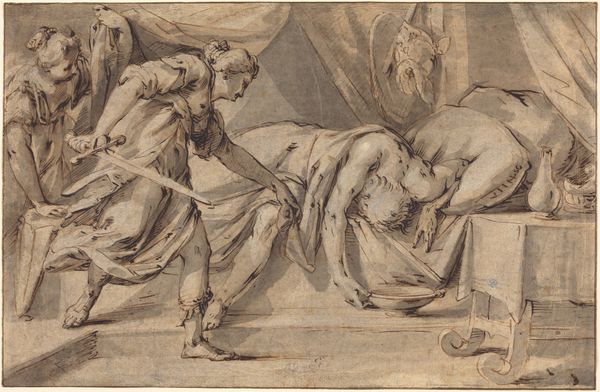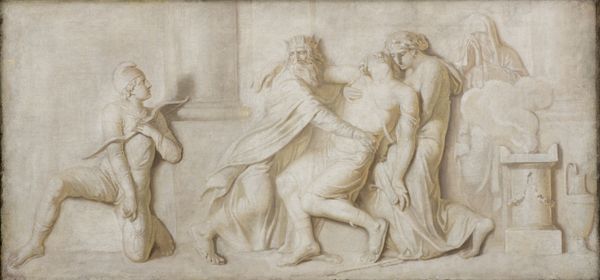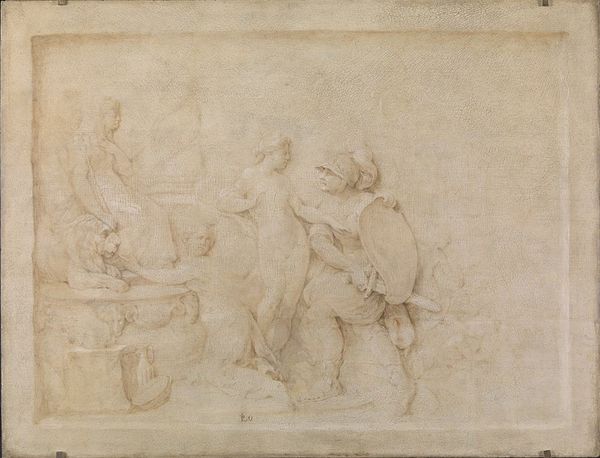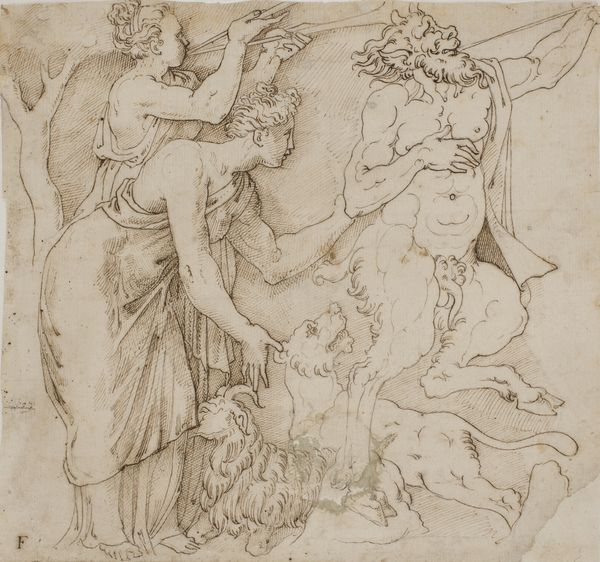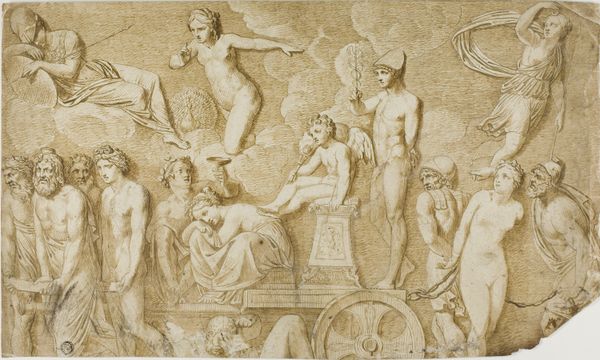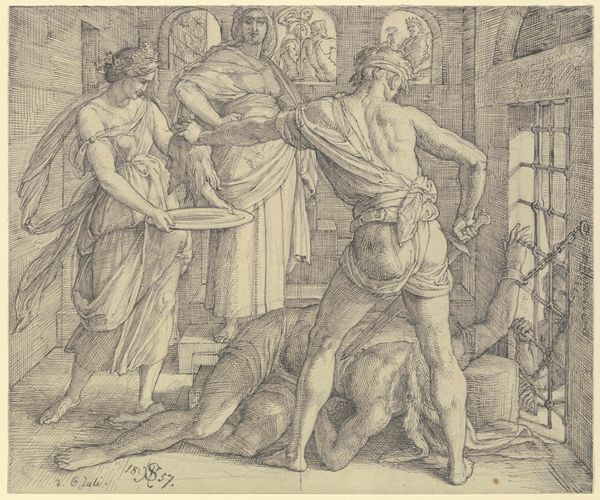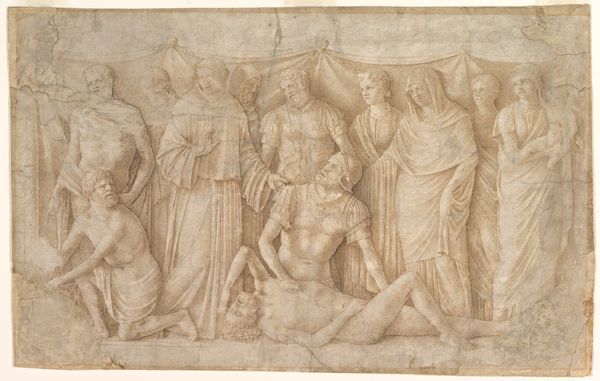
King Priam Pleading with Achilles for the Corpse of Hector 1794 - 1798
0:00
0:00
relief, sculpture, marble
#
neoclacissism
#
greek-and-roman-art
#
relief
#
charcoal drawing
#
figuration
#
sculpture
#
history-painting
#
marble
Dimensions: 60 cm (height) x 120 cm (width) (Netto), 69 cm (height) x 125.7 cm (width) (Brutto)
Editor: This is Nicolai Abildgaard's marble relief, "King Priam Pleading with Achilles for the Corpse of Hector," created between 1794 and 1798. The stark whiteness and shallow depth give it an austere, almost unsettling feel. What do you see in this piece beyond the obvious drama of the scene? Curator: Well, considering Abildgaard’s neo-classical style through a materialist lens, it becomes vital to acknowledge marble as a luxury good, intertwined with the socio-economic hierarchies of the time. Notice the intense labor needed to produce such work. How does that effort itself shape the narrative? Editor: That's a great point, I never thought about that, the means of production almost mirror the themes represented: conflict, power dynamics... Curator: Exactly. It makes us question: Who had access to marble? Who dictated its use? Who profited from its production? The choice of representing this scene from Homer’s *Iliad* in this specific material reinforces class distinctions, and perhaps speaks about how that translates across history to a modern viewer and consumer. Editor: So, even though it's a classical scene, it speaks volumes about the here and now when considering how materials were consumed at the time it was made? It makes me think how current art production is reliant on the labor that is not visible when presented. Curator: Precisely. By acknowledging this dynamic we move away from idealised forms towards something more grounded, something about exploitation, control, and ultimately, the material cost of war – even one depicted in "high art" terms. The relief, therefore, embodies both beauty and brutal reality. Editor: It really reframes my perspective. I’ll definitely look at art through the process that created it from now on. Curator: That is definitely my hope, our conversations have changed how I look at it too.
Comments
No comments
Be the first to comment and join the conversation on the ultimate creative platform.

